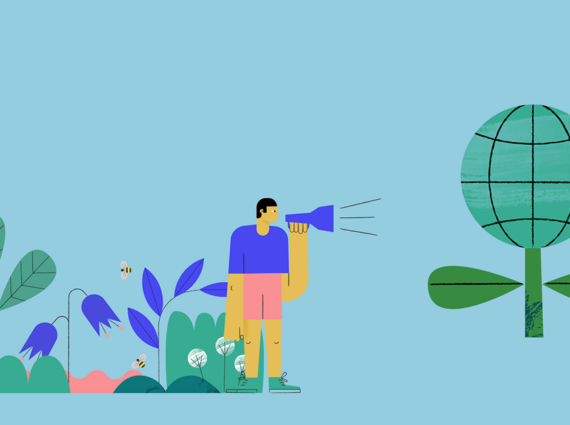Regardless of the time of year or day, we may encounter a feathered or furry creature in need on our path. The reasons are multifold, starting with difficult weather conditions and ending with a failed attempt to adapt to city life. The degree of urbanisation is increasing, the administrative borders of cities are being extended, and more roads are being built in forest areas. Some of them cut through wildlife routes and cross them with the passage of cars. Even a zebra in the middle of this intersection would not make any difference.
Because wild animals are often unable to cope independently, our actions can save their health and lives.
When is help for wild animals needed?
There are times when we do an animal a disservice despite our best intentions to help. It often concerns young animals, i.e. all chicks, puppies, goat kids, hares or hedgehogs encountered in the forest or on a meadow. This is understandable, as it is difficult to pass indifferently by a baby deer shivering in the bushes or a fox howling for its mother.
However, if it’s not a repeat of the Bambi fairy tale, simply move on. If the adult animal is not around, it doesn’t necessarily mean that the cubs have been abandoned. This might merely be a lesson of independence or a survival strategy. Deer usually visit their offspring only twice a day!
The same is true of chicks. If you come across a downy chick in the undergrowth or meadow, first look around to see if there is a nest nearby. If it is not damaged, put the chick into it. There is a good chance that the bird has fallen out of the nest and its parents are in the area. They may even be watching you from a distance. If our new mate already has feathers, there’s a good chance he’s just learning to fly. Seat him on a bush or branch if you are concerned that a predator may be nearby. However, it is best to let him learn on his own.
Remember, you don’t have to worry that the bird parents will smell your scent and reject the fledgling. Adult birds recognise their offspring by sight and hearing; their sense of smell is poorly developed.
Of course, these rules apply when we are also sure that the animals are not suffering. We should therefore look out for visible injuries. Blood, visible fractures, open wounds, visible entanglement in a trap – these signs are red flags showing it is high time to act.
First aid for wild animals
First of all, make sure your safety is not at risk. As with human first aid – the best rescuer is a skilled rescuer. So if you want to help an animal that has been injured in a road traffic accident, make sure it is safe to walk on the roadway. Remember to turn on your car’s hazard lights and put out a warning triangle.
When you approach an injured animal, keep in mind that even Bambi has teeth. Stress, shock and pain can trigger defensive reactions. The animal may try to defend itself: kick, bite, scratch or peck. This will hurt.
Whatever the size of the animal, an important step is to inform the relevant services. If the injured animal is on the road and you are unable to move it, you should notify the police. In other cases, you can call the municipal services. Some municipalities have special eco-patrols whose task is precisely to help injured wild creatures. It is also a good idea to call one of the animal rehabilitation centres directly. On the General Directorate for Environmental Protection website, there is a list of clinics divided into provinces.
In case you are in Northern Poland and a marine animal, porpoise or seal needs help, you should inform the WWF Blue Patrol or the Marine Station in Hel as soon as possible.
Do not approach seals or porpoises, even if you see an open fracture. These animals need specialist help and care, which is why it is so important to notify the services. The best thing we can do is make sure the animals are calm, and nobody approaches them. Let’s keep away beachgoers ready to take photos with cute animals. Explain that, above all, they need peace and silence.
The same applies to large forest mammals. For your own safety and that of the patient, it is better to leave it in place. Trying to lift or carry an injured boar, deer, or elk may not bring the best results. Instead, it’s worth securing the nearby area so that the injured animal has peace. If possible, put a blanket or T-shirt over the animal’s eyes. Covering animals’ eyes will reduce the stress of human contact.
You can pick up small animals from the street on your own – it’s a good idea to have gloves, a blanket or anything to protect your hands. Place an injured animal in a box, basket or at least a bucket. The most important thing is that it is quiet, dark and warm. Peace and silence will help it to calm down. While waiting for the services to arrive or during transport to the clinic, you can try to give it water.
Change the world for the better!
Being attentive to the needs of animals is commendable. With this attitude, you can really save an animal in need! If you want to learn more about how you can protect the climate and the environment with small actions, follow the TerGo blog or follow our social media!




